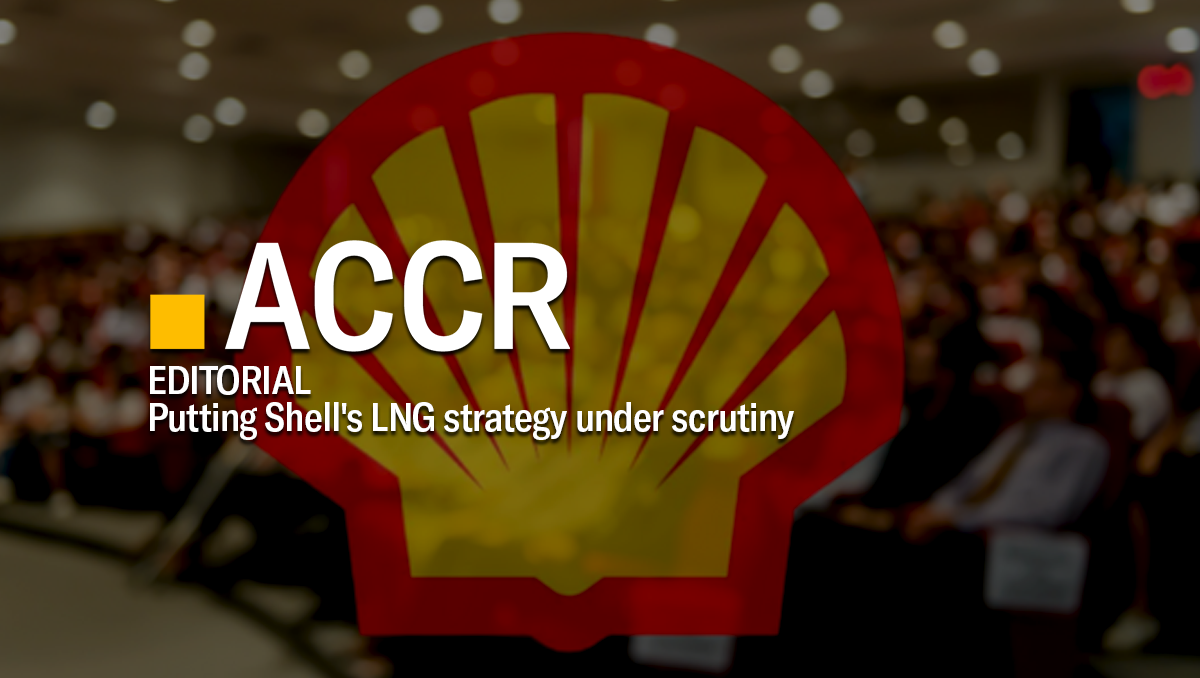Investor Insight Editorial: Putting Shell's LNG strategy under scrutiny
This article by UK Company Strategy Lead, Nick Mazan, was first published by Energy News Bulletin on 15 January 2025.
The global LNG market appears to be on the brink of a seismic shift. The International Energy Agency (IEA), alongside other major energy commentators, projects a 50% increase in LNG export capacity before the end of the decade. As the industry moves from undersupply to one of excess capacity, the implications for energy companies like Shell are profound and could negatively impact earnings across the LNG value chain. For investors it is a shift that requires transparency and detail around financial risk and demand projections.
Our team at the Australasian Centre for Corporate Responsibility (ACCR) has found that Shell has over 1bn tonnes of uncontracted LNG between now and 2050 – more than any other independent oil and gas company - leaving it significantly exposed to price movements. For every US$1/MMbtu reduction in LNG prices, Shell could experience a staggering negative US$13bn impact on their net present value (NPV).
The degree to which Shell has chosen to expose itself to the spot market seems to imply a faith in prices remaining high or increasing over time as a result of new supply capacity coming online, even when prices are expected to fall as capacity outstrips demand.
The reliance on high prices, combined with the company’s bullish forecast for LNG demand, raises critical questions for investors about Shell’s strategy. Together with ACCR and UK-based shareholder advocate ShareAction, institutional investors have filed a resolution to be voted on at Shell’s 2025 AGM. The shareholder resolution challenges the assumptions underpinning the company’s LNG strategy and LNG Outlook, and questions its alignment with Shell’s climate commitments, including its target of net zero emissions by 2050.
While Shell has a reputation as a large and sophisticated LNG trader, its track record on investments tells a different story. In Australia, Shell has invested US$47 billion building its stakes of NWS, QCLNG, Prelude and Gorgon but poor execution, including cost overruns and delays, has eroded US$3.5 billion in NPV. Despite this, Shell plans to grow its LNG business by 20-30% by 2030, and expand liquefaction capacity by 25-30%. In Shell’s LNG Outlook, global demand for LNG grows 50% by 2040.
Yet these optimistic forecasts don’t account for recent market disruptions or the growing competitiveness of renewables. For example:
- The global energy transition is accelerating. The IEA has significantly revised its LNG demand projections downward in light of Russia’s invasion of Ukraine, coupled with faster-than-expected falling costs for clean energy. Between 2021 and 2024, the IEA’s Announced Pledges Scenario cut LNG demand projections for 2040 by 28%. Shell’s assumptions, however, have barely changed.
- Renewables are outcompeting LNG in key markets. In many of the countries that Shell cites as regions of particularly rapid LNG demand growth, such as Vietnam, Bangladesh and Thailand, the levelized cost of electricity for LNG-to-power, applying conservative US$9/MMbtu prices, at an operational gas-fired power plant, are around twice that of constructing a new fixed-axis solar plant. While Shell seems to be banking on achieving high prices and high volumes, our research suggests these nations are unlikely to embrace LNG at high prices.
Further, Shell’s most recent LNG Outlook for 2040 exceeds the demand of all the IEA’s scenarios, raising serious questions about its compatibility with the company’s climate goals. In fact, Shell’s 2040 demand forecast is more than 300% higher than the IEA’s Net Zero Emissions by 2050 scenario.
Shell also needs to demonstrate for investors that it is factoring energy security and reliability into its assumptions. While concerns around the intermittency of renewables are well known, it is also manageable with planning. However, countries with a high degree of reliance on LNG are seriously exposed to volatile global prices. Countries like Pakistan and Bangladesh have already felt the pain of such commodity price swings over the past few years with high LNG prices, driven by European demand, pricing them out of the market.
For Shell, these are not hypothetical risks, they are fundamental to the company’s future. Investors need clarity on how Shell plans to navigate these profound changes in energy markets, and whether its strategies reflect the realities of the evolving market, or just wishful thinking. With billions at stake, Shell needs to explain its assumptions to investors and how its LNG strategy aligns with both financial prudence and its climate commitments.
